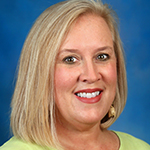How do You Reach Constituents in a Hurry?

Imagine an autistic child has wandered away from home. It recently happened in a Kentucky city. Once notified, the local police department sent out a notification using the REACH Alert system. Within three minutes, the child was located. It was a good ending for all involved.
There are all types of “emergencies,” including winter weather emergencies. For Kentucky cities, that includes the hard work of keeping the public informed about everything – street conditions, power and water outages, shelters and warming services, and much more. Social media and other outlets are critical, but KLC member cities can take one more step to communicate quickly and easily with residents. Many churches, schools, and other organizations use similar technology.
With a Kentucky-based company, REACH Alert, cities have the power to inform citizens of safety concerns and breaking issues without relying on county-based or other types of systems. Cities can also use the system to push out positive information about city news and events. Through its partnership with Kentucky-based REACH Alert, cities have access to a service that they can easily and affordably customize to emergency communication needs. REACH Alert provides municipalities, utilities, and other organizations the ability to instantly communicate timely information in the easiest, most efficient way possible, including text, phone, email, or any combination of the three. The platform is based on years of experience developing communication systems.
Through the KLC partnership, the first year is offered at 50% off the normal rate of $2 per household for unlimited sends. The rate is based on cities with less than 2,000 households — the larger the city, the lower the cost per resident. REACH Alert operates on a 12-month contract versus a typical three-year contract for standard emergency notification systems and has a 96% renewal rate among municipal users. Many cities split the program’s cost between city administration and the police department or even with the local chamber of commerce to promote events. Each user is different, and each program is customized for what they need.
“Our feedback speaks for itself,” said Ken Weber, REACH Alert CEO. “What differentiates us from emergency notification systems is that we are a full-scale communications system across multiple platforms.”
Weber said the product was created out of need. If cities are within a county-wide emergency alert service, the county will send out a basic notice about a tornado or flood warning. However, if the city wants to notify residents of that threat or other information — power is restored in their neighborhood after an ice storm, an event is postponed due to weather, or a street is closed to replace a water line — the REACH Alert system can send a community-wide message, or it can pinpoint the message down to a street. Some cities and police departments use the system to report missing children or missing elderly persons. Some cities even use the system to announce missing pets in specific neighborhoods.
Williamsburg Mayor Roddy Harrison said, “We use it all the time. We actually started off using it for utility notifications and outages and realized we can reach a lot of people.” Harrison said, “Now we use it as a promotional tool for good things happening in the city: block parties, concerts, events. And a lot of people have gotten back to us to let us know that they really appreciate it.”
While cities can use social media, their websites, local media, and other avenues to push out information, with REACH Alert, it can be micro-targeted. If only one neighborhood is affected by utility crew work, the entire community may not need to know, but neighborhood residents are grateful to get an email, call, or text. Weber said the read rate on text messages is 98%.
“We embrace this program because we know every day brings something different in our cities,” said Jeri McCullough, KLC Director of Member and Business Development. “It’s about peace of mind and helping cities do more with less.” McCullough said KLC supports a handful of special member programs, and this is one of them. “We feel so strongly about what they do; we use REACH Alert for communication to our employees and Board members.”
Primary city users include the clerk, the police chief, or a utility representative. Weber said, “We get four checks for one account from some cities — one from the city, one from the city utility, one from the police department, and one from the chamber of commerce which the city may share it with to communicate with businesses.”
Weber said one city utility regularly sends notices to delinquent customers. By doing so, their cut-off rates have decreased by 50% — a win-win for everyone.
REACH Alert trains all users and is available for questions and assistance. They employ a strict privacy policy and never share user information. Weber said he encourages each city’s administrator to use the system strategically and not go overboard. In addition, residents signing up for the system can request alerts and notifications, or just alerts. More than 10 years of research has shown that for every one true emergency, cities will send out 100 other types of notifications.
“It’s really a great tool to help cities communicate all they have going on, not just the emergent things,” said Weber.
The system allows for multiple phone numbers and emails per household to reach the highest number of people for your investment and can be changed as needed. Residents must sign up for the system, so it’s self-selected.
“The City of Pineville used the system to notify residents of bear sightings in the area,” said Weber. “That’s the beauty of the system. It’s easy, fast, and you can use it as you need it — however unusual the situation may be.”
More than 50 Kentucky cities and municipal agencies use REACH Alert to:
- Notify residents of emergencies
- Notify residents of threats or other high-alert situations
- Notify residents of hazardous situations such as downed power lines, broken water lines, or road closures
- Communicate severe weather-related advisories
- Notify residents of lost persons - children, seniors, even lost pets
- Notify residents of crime issues - such as suspects at large, burglaries, etc.
- Send public service advisories
- Advise citizens of routine utility operations - road work, tree trimming, road marking
- Provide city employees with critical information in the field, in real-time
- Coordinate work crews, contractors, and subcontractors in times of emergency
- Promote upcoming city events and meetings and other positive news
For more information:
- Kentucky League of Cities
- Jeri McCullough, KLC Director of Member & Business Development, 800.876.4552.
- Ken Weber, REACH Alert, 877.307.9313


